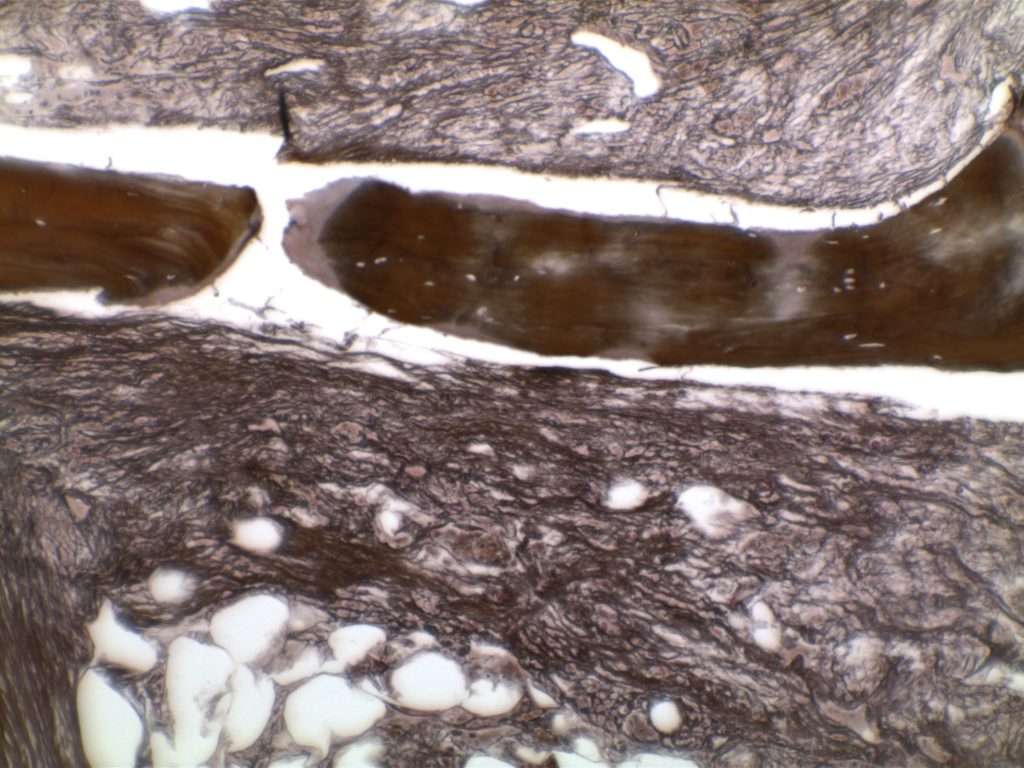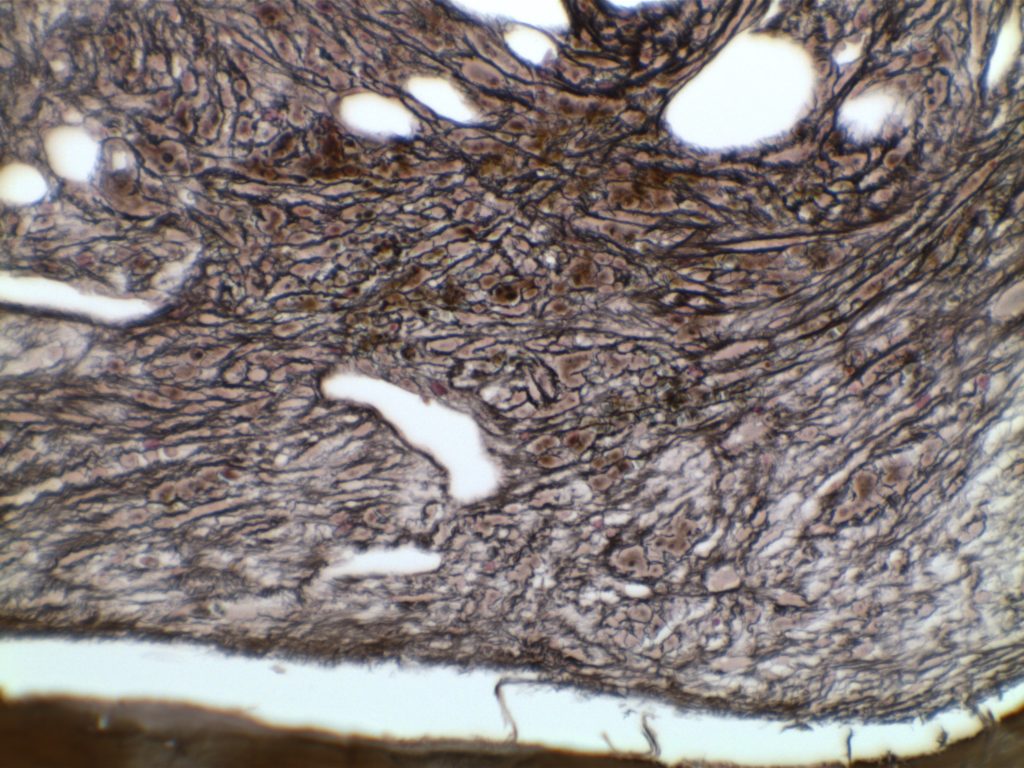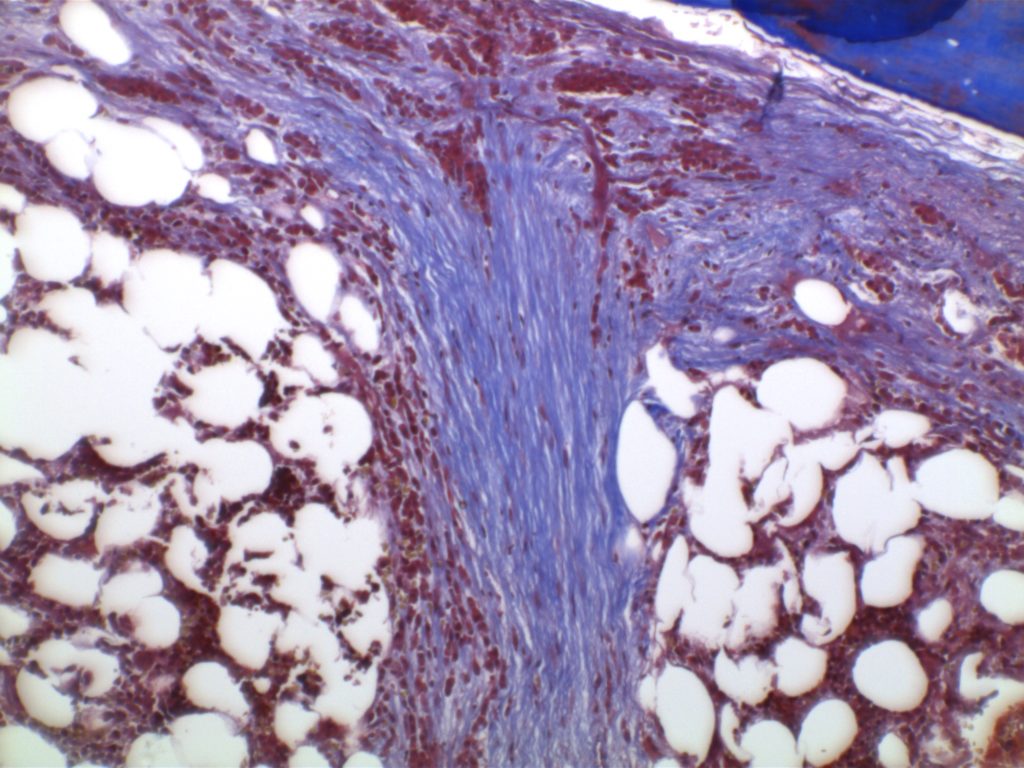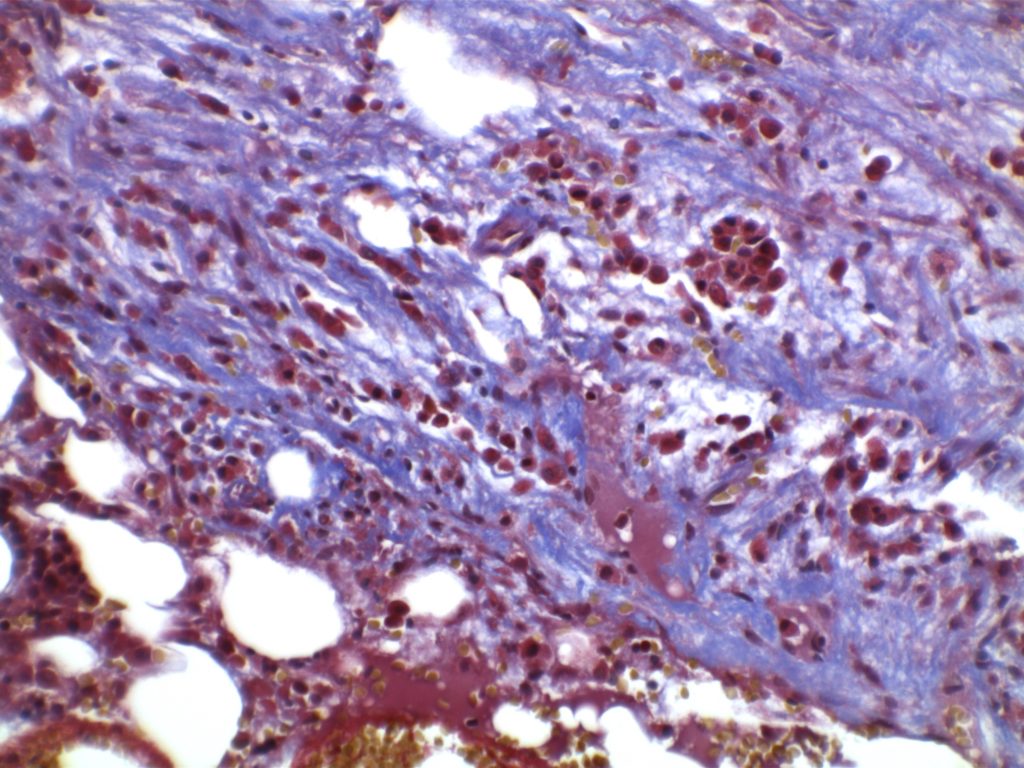Diffuse increase of reticulin fibers with increased density and numerous intersections. Increased thick bundles of fibers consistent with collagen fibrosis. Osteosclerosis usually present.
Photomicrographs




Diffuse increase of reticulin fibers with increased density and numerous intersections. Increased thick bundles of fibers consistent with collagen fibrosis. Osteosclerosis usually present.




|
-7 or del (7q)
|
-5 or del(5q)
|
|
i(17q) or t(17p)
|
-13 or del(13q)
|
|
del(11q)
|
del(12p) or t(12p)
|
|
del(9q)
|
idic(X)(q13)
|
|
t(11;16)(q23;p13.3)
|
t(3;21)(q26.2;q22.1)
|
|
t(1;3)(p36.3;q21.2)
|
t(2;11)p21;q23)
|
|
inv(3)(q21q26.2)
|
t(6;9)(p23;q34)
|
Myofibroblastoma (MFB) of the breast is an uncommon but well described benign stromal neoplasm of the breast. MFB can have many different morphologic patterns (see variants below), but important defining characteristics include:
Care should be taken that immunophenotyping panels are extensive, and consideration is given to other entities such as plasmacytoid dendritic precursors, non-hematopoietic tumors, NK-cell precursors, etc. Essentially, a diagnosis of exclusion.
Arber DA, Orazi A, Hasserjian R, Thiele J, Borowitz MJ, Le Beau MM, et al. The 2016 revision to the World Health Organization classification of myeloid neoplasms and acute leukemia. Blood. 2016;127: 2391–2405. doi:10.1182/blood-2016-03-643544
Swerdlow SH, Campo E, Harris, NL, Jaffe ES, Pileri SA, Stein H, Thiele J (Eds): WHO Classification of Tumours of Haematopoietic and Lymphoid Tissues (Revised 4th edition). IARC: Lyon 2017
IgM MGUS is considered as a precursor to lymphplasmacytic lymphoma (LPL) and/or Waldenstrom and is separate from Non-IgM MGUS (IgG, IgA), which is a precursor to plasma cell myeloma.